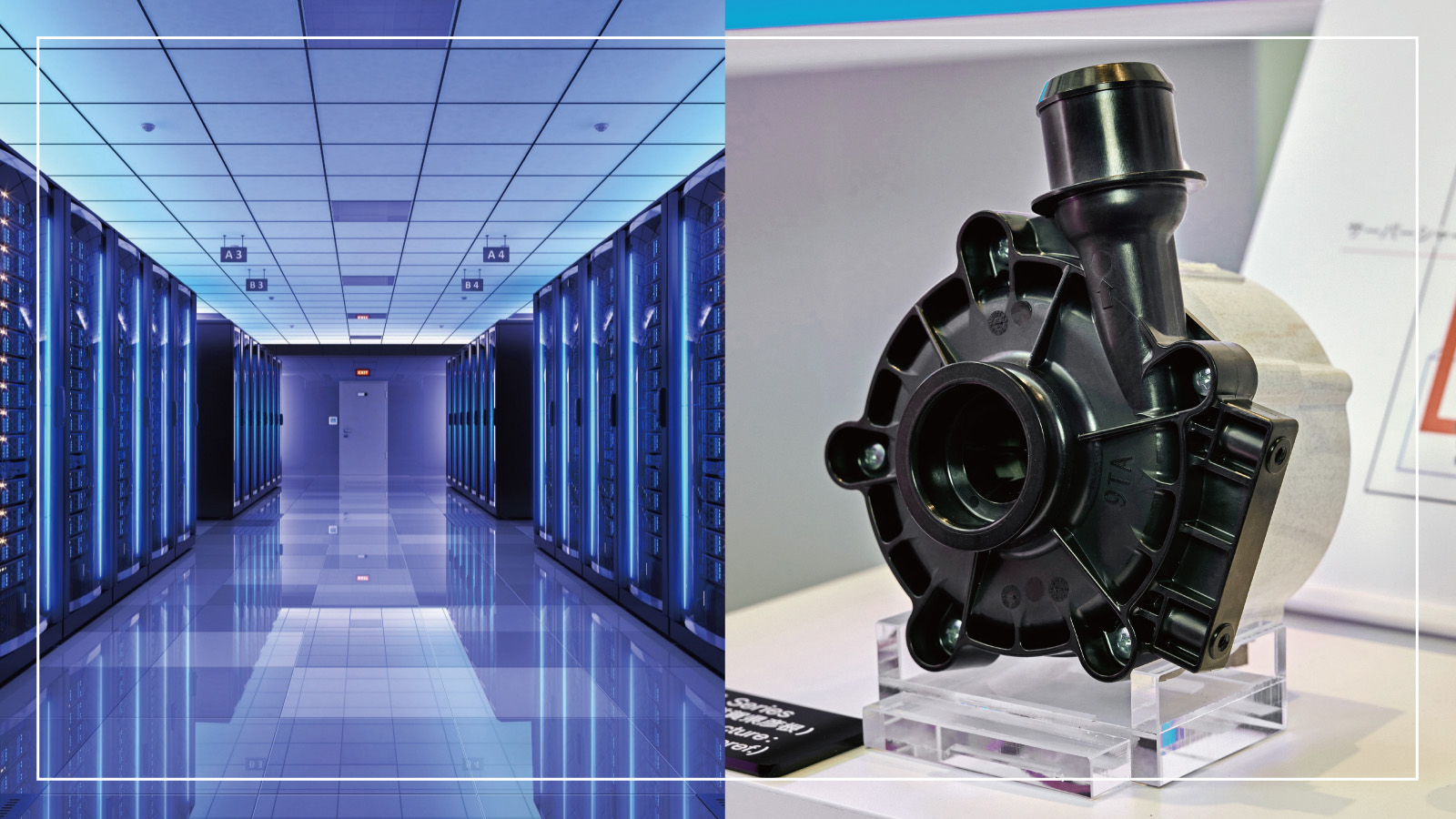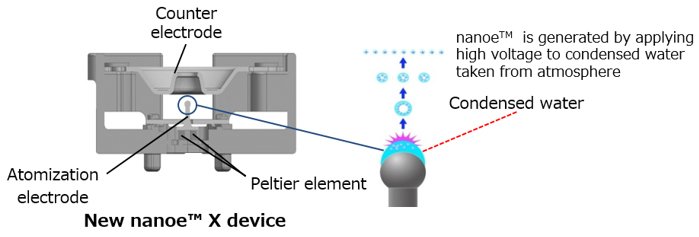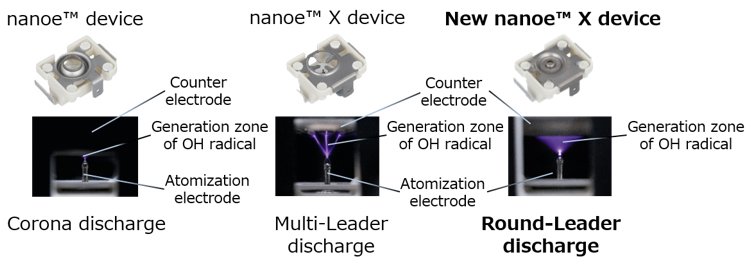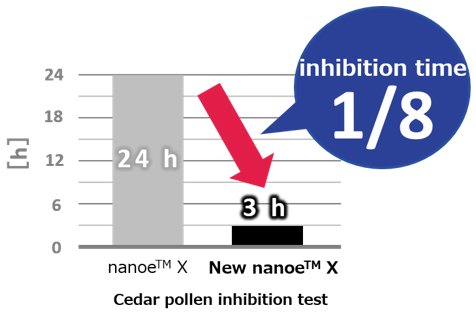
Nov 18, 2025
- Products & Solutions
- Stories
- Operating Company
Sep 01, 2021
Products & Solutions / Press Releases
- Generating 100 times more*1 OH radicals than the conventional nanoe™*2 device
Osaka, Japan – Panasonic Corporation today announced that through collaboration with Professor Emeritus Yoshio Higashiyama of Yamagata University, it has developed a new nanoe™*2 X device that generates 100 times more*1 Hydroxyl(OH) radicals than the conventional nanoe™*3 device. As a result, the latest nanoe™ X device delivers increased effectiveness in air purification and deodorization in indoor spaces.
Recently, people have become more conscious of the indoor air environment as they cope with lifestyle changes, spending more time indoors, with an increasing number of people refraining from going out and telecommuting.
Since it developed the first nanoe™ device in 2003 designed to improve the air environment, Panasonic has continued to pursue nanoe™ technology over the years. In 2016, the technology evolved into a nanoe™ X device that produces 10 times*4 more OH radicals than nanoe™. Now, beyond consumer electronics such as air conditioners and air purifiers, the use of nanoe™ and nanoe™ X devices has been expanded to transportation including cars and trains, as well as public spaces such as hospitals and hotels. Through these efforts, Panasonic has been providing clean and comfortable spaces by improving air quality.
While the conventional nanoe™ X device adopts a multi-leader discharge system that achieves a concentrated electric discharge using a 4-needle-shaped counter electrode plate, this newly developed nanoe™ X device has evolved through its round-leader discharge system that discharges electricity in a circular pattern to increase the area for generating OH radicals. This allows the new nanoe™ X device to increase the amount of OH radicals generated to 48 trillion radicals per second, 100-fold*1 compared to the nanoe™ device, while maintaining the advantages of nanoe's weak acidity and long life properties. This has led to the achievement of the new nanoe™ X device with further improved cleanliness effects as shown below.
Note that these verification tests were carried out in a test chamber and all measured times above differ from those measured in actual use space.
Panasonic will continue to pursue and evolve the potential of its nanoe™ technology and provide clean and comfortable spaces in various facets of our lives and society, including consumer electronics, automotive, and housing-related fields.
The new nanoe™ X device has a 100-fold*1 increase in the amount of OH radicals generated compared to the nanoe™ device, while maintaining the advantages of nanoe's weak acidity and long life properties. This has further improved nanoe's cleanliness effects.

nanoe™, which is approximately 5 to 20 nm in size and contains OH radicals, is generated by cooling the atomizing electrode with a peltier element, creating water through the condensation of moisture in the air, and applying a high voltage between the atomizing electrode and the counter electrode plate.

While the conventional nanoe™ X device uses a multi-leader discharge system with a 4-needle-shaped counter electrode plate to achieve concentrated electric discharge aimed at the tip of the needles, this new nanoe™ X device adopts a dome-shaped counter electrode plate. The company has developed a new device using a round-leader discharge system that forms countless leader discharge points in a conical shape by shortening the discharge distance. This has expanded the area for generating OH radicals with a high electron density to achieve a 10-fold increase in the amount of OH radicals generated compared to the conventional nanoe™ X device. The development of the new nanoe™ X device has been carried out in collaboration with Professor Emeritus Yoshio Higashiyama of Yamagata University.

After the most common pollen (cedar) in Japan was set in the center of a 23 m3 test chamber, an air blower equipped with the new nanoe™ X device was operated for the specified time to check the inhibition of the pollen with the ELISA method.
It was verified that 99% or more of the cedar pollen was inhibited in three hours.

After a cloth to be tested to which body odors (aging odors) had adhered was set in the center of a 23 m3 test chamber, an air blower equipped with the new nanoe™ X device was operated for the specified time to check the deodorization effect.
For body odors (aging odors), it was verified that over a period of 15 minutes, the odor intensity was reduced to a level where a different sensation was perceived compared to when such a cloth was left in a natural condition.

After gauze to be tested to which mold had adhered was set in the center of a 30 m3 test chamber, an air blower equipped with the new nanoe™ X device was operated for the specified time. Subsequently after retrieving the gauze and leaving it at a temperature of 25°C and a humidity of 90% for mold cultivation, the inhibition of mold growth was confirmed.
It was verified that after the gauze had been exposed to the air blower equipped with the new nanoe™ X device for two hours, the growth of mold (Cladosporium / Alternaria) was inhibited.

Panasonic Corporation Brand Strategy Division Corporate PR Department
https://news.panasonic.com/global/contacts/
Panasonic Corporation is a global leader developing innovative technologies and solutions for wide-ranging applications in the consumer electronics, housing, automotive, and B2B sectors. The company, which celebrated its 100th anniversary in 2018, operates 522 subsidiaries and 69 associated companies worldwide and reported consolidated net sales of 6,698.8 billion yen for the year ended March 31, 2021. Committed to pursuing new value through collaborative innovation, the company uses its technologies to create a better life and a better world for customers. Learn more about Panasonic: https://www.panasonic.com/global.
The content in this website is accurate at the time of publication but may be subject to change without notice.
Please note therefore that these documents may not always contain the most up-to-date information.
Please note that German, Spanish and Chinese versions are machine translations, so the quality and accuracy may vary.